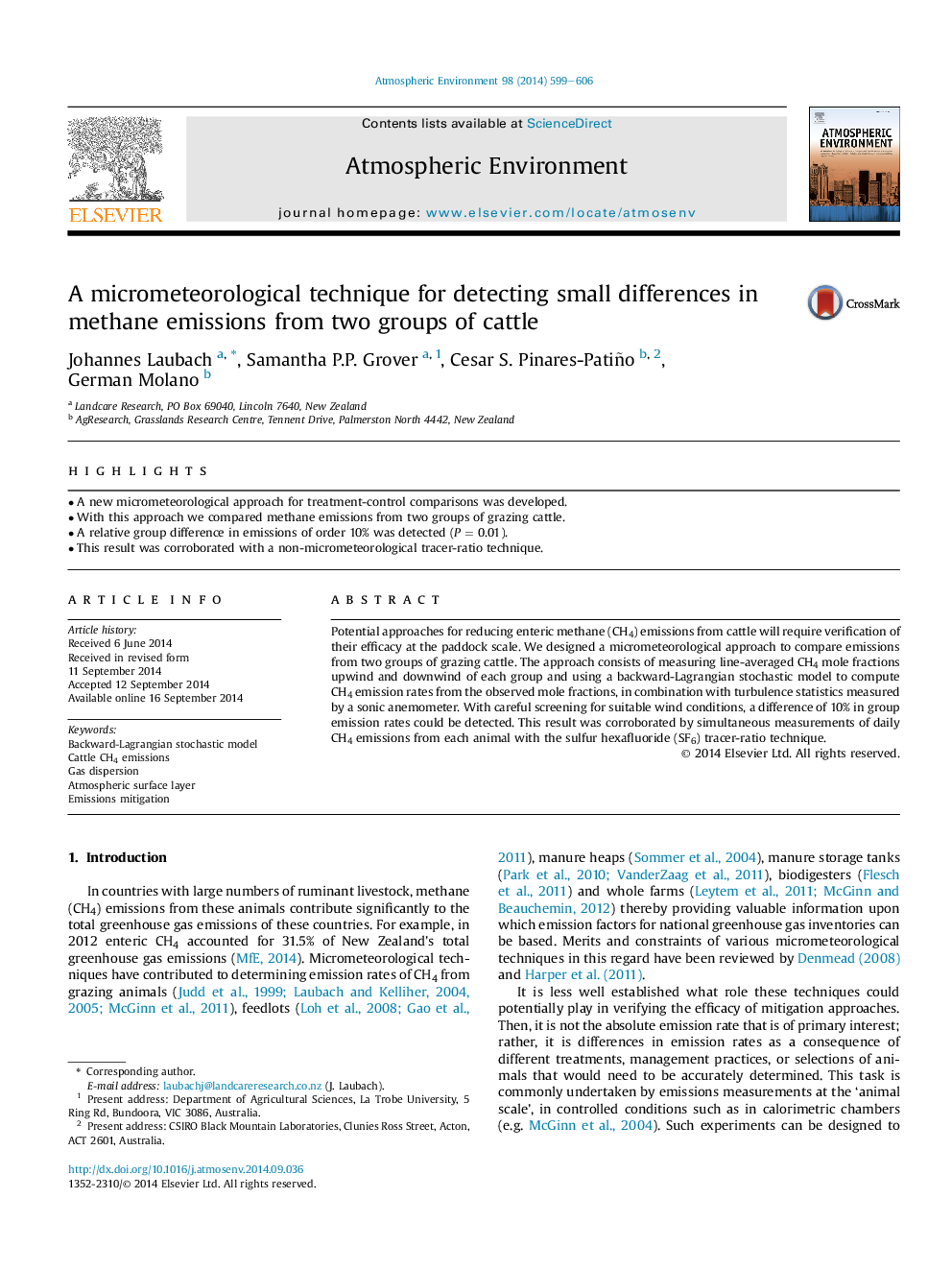| Article ID | Journal | Published Year | Pages | File Type |
|---|---|---|---|---|
| 6339042 | Atmospheric Environment | 2014 | 8 Pages |
Abstract
Potential approaches for reducing enteric methane (CH4) emissions from cattle will require verification of their efficacy at the paddock scale. We designed a micrometeorological approach to compare emissions from two groups of grazing cattle. The approach consists of measuring line-averaged CH4 mole fractions upwind and downwind of each group and using a backward-Lagrangian stochastic model to compute CH4 emission rates from the observed mole fractions, in combination with turbulence statistics measured by a sonic anemometer. With careful screening for suitable wind conditions, a difference of 10% in group emission rates could be detected. This result was corroborated by simultaneous measurements of daily CH4 emissions from each animal with the sulfur hexafluoride (SF6) tracer-ratio technique.
Keywords
Related Topics
Physical Sciences and Engineering
Earth and Planetary Sciences
Atmospheric Science
Authors
Johannes Laubach, Samantha P.P. Grover, Cesar S. Pinares-Patiño, German Molano,
